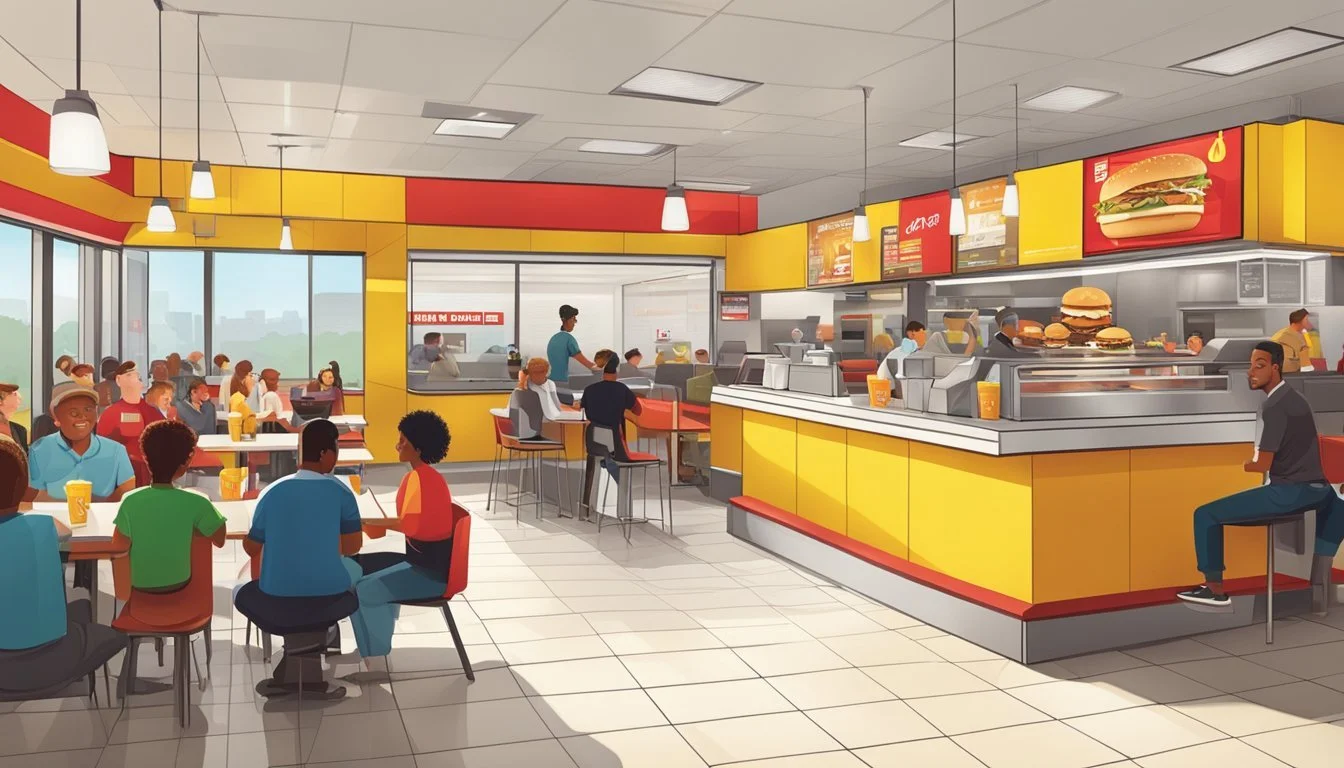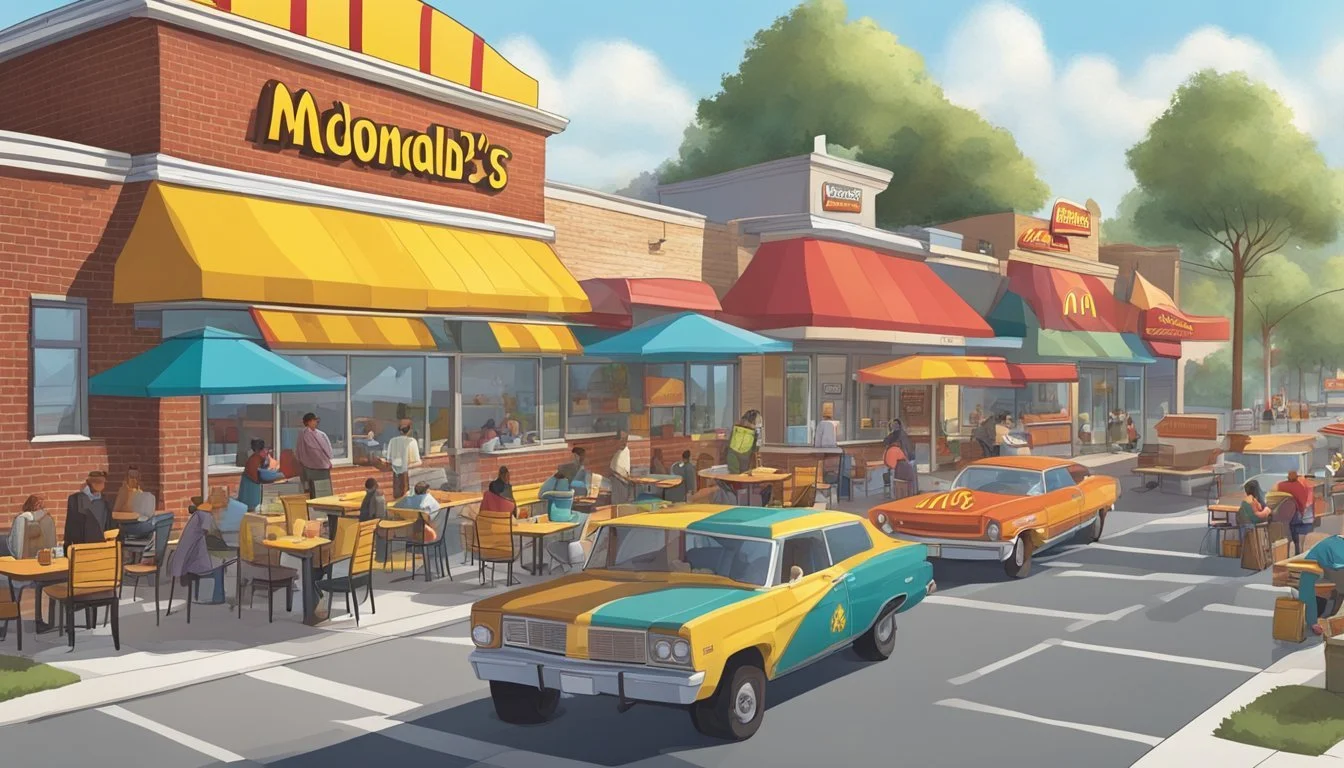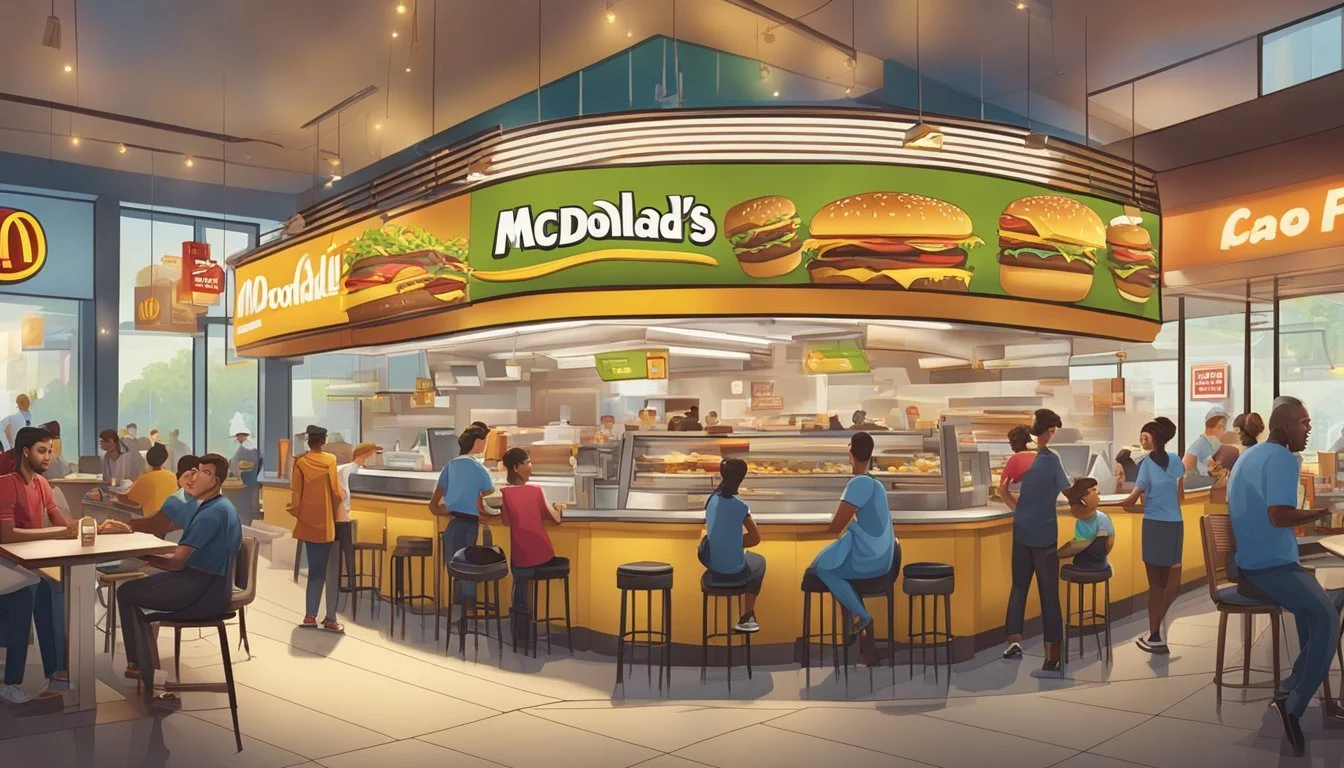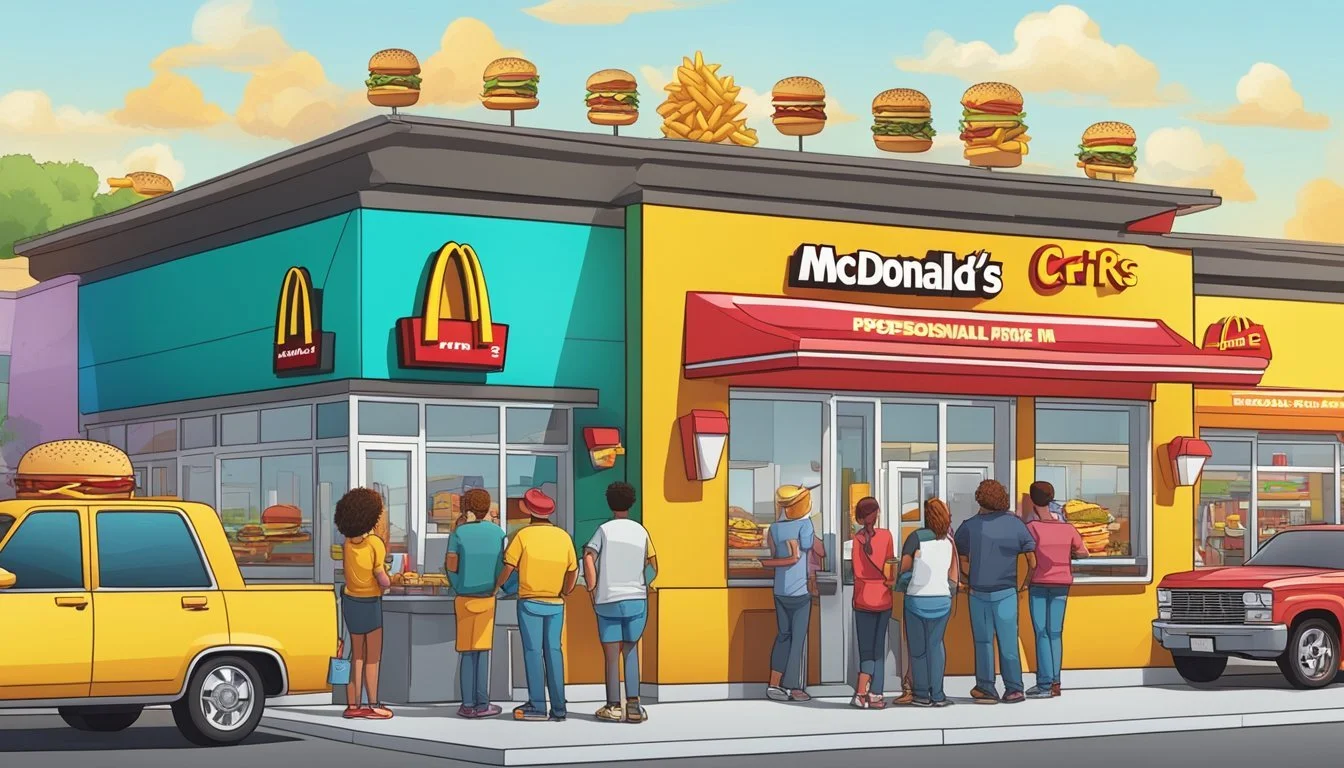McDonald's vs Carl's Jr.
An Unbiased Comparison of Burger Quality
When assessing the fast food landscape, two burger chains often come up for comparison: McDonald's and Carl's Jr. These establishments serve millions worldwide, and their iconic burgers have defined American fast food culture. McDonald's, with its global presence and renowned Golden Arches, is synonymous with quick-service efficiency and a universally recognized menu. On the other hand, Carl's Jr., known for its charbroiled burgers, offers a more select market presence, with a reputation for larger, more extravagant burger options.
The competition between these two chains is more than a simple battle of flavors; it encapsulates differing approaches to serving a fast food staple—the burger. McDonald's has perfected the art of the quick and consistent burger with the Big Mac, a household name in itself, leading the charge. Carl's Jr., while offering their own variety of burgers such as the Super Star with Cheese, takes pride in a more premium, albeit pricier, burger experience. Though it may not match McDonald's in terms of size and recognition, its dedicated customer base appreciates its unique offerings.
Consumer preferences play a significant role in determining which chain is 'better.' For some, the speed and familiarity of McDonald's may be the ultimate convenience. Others may prefer the bespoke experience and more diverse menu options that Carl's Jr. provides. The evaluation isn't simple as both chains deliver distinct experiences tailored to their brand identities, leaving the choice to personal taste and priorities in a fast food meal.
Historical Overview of McDonald's and Carl's Jr.
McDonald's began as a single restaurant in San Bernardino, California, opened by the McDonald brothers in 1940. It found success with its efficient preparation system and was turned into a franchise by Ray Kroc in 1955. Kroc emphasized standardization and built the company into one of the world's most recognizable brands.
Founding Year: 1940
Catalyst for Franchise Success: Ray Kroc (1955)
Original Location: San Bernardino, California
Brand Advantage: Global recognition and standardization
Carl's Jr., started by Carl Karcher, has a similar Southern California origin story. Karcher launched a hot dog cart in Los Angeles in 1941 and eventually opened the first two Carl's Jr. restaurants in 1956. This brand capitalized on a slightly different market segment, offering charbroiled burgers and a more diverse menu.
Founding Year: 1941
Expansion: Opened first restaurants in 1956
Brand Edge: Charbroiled burgers and menu variety
While McDonald's grew rapidly and benefited from early decisions by businessman Ray Kroc, Carl's Jr. carved out its own niche on the West Coast. Each chain has established a strong presence in the fast-food industry, demonstrating the potential for success through different strategies and brand propositions.
Comparison: McDonald's prioritizes consistency and a broad appeal, while Carl's Jr. focuses on distinctive burgers and regional growth.
Glen Bell: Not directly related to McDonald's or Carl's Jr., but another fast-food innovator who founded Taco Bell.
Both brands have made a lasting impact on fast food, yet McDonald's has achieved a more significant global presence, giving it a brand advantage in many markets worldwide.
Menu Diversity and Signature Dishes
Fast food aficionados often compare the illuminating experience of biting into a well-crafted burger. McDonald's and Carl's Jr. each deliver distinct dining experiences through their diverse menus and signature dishes.
McDonald's Classics
McDonald's offers an array of staple menu items, with the Big Mac standing tall as its iconic burger. This classic burger features two all-beef patties, special sauce, lettuce, cheese, pickles, onions – all nestled between a three-part sesame seed bun. Another pillar of the McDonald's menu is the secret menu, where patrons can have their appetite satisfied in unexpected ways with customized combinations.
Big Mac: Two beef patties, special sauce, lettuce, cheese, pickles, onions on a sesame seed bun.
Secret Menu Items: Customer-created combinations offering unique and often larger meal options.
Carl's Jr. Favorites
Carl's Jr.'s menu boasts its own crowd-pleasers, such as the Western Bacon Cheeseburger, known for its smoky barbecue sauce and crispy onion rings topping hefty charbroiled beef. The Famous Star and Big Carl also garner attention— the former offering a classic take on the charbroiled burger, and the latter as a significant competitor against McDonald's Big Mac.
Western Bacon Cheeseburger: Charbroiled beef, barbecue sauce, American cheese, onion rings on a seeded bun.
Famous Star: One charbroiled beef patty, lettuce, tomato, sliced onions, dill pickles, special sauce, and mayonnaise on a seeded bun.
Big Carl: Two charbroiled beef patties, classic sauce, two slices of American cheese, and lettuce on a seeded bun.
Food Quality and Taste Comparison
In evaluating McDonald's and Carl's Jr., the focus is specifically on the distinct character of their burgers, the palate experience, and the diversity of side offerings that complement their main attractions.
Burger Profiles
McDonald's burgers are widely recognized for their consistent taste, which is a result of a specific blend of beef, a controlled amount of salt, and the use of branded sauces such as ketchup and mayo. The iconic Big Mac is a standout with its special sauce and double-layered beef patties.
Carl's Jr., on the other hand, emphasizes thicker patties that are often described as more juicy and charbroiled, offering a more pronounced grilled flavor. Their burgers tend to be bigger, such as the Super Star with Cheese, which boasts two charbroiled patties and a generous helping of toppings.
Sides and Beyond
While both establishments offer the standard fries as a side, the taste and quality can vary. McDonald's fries are often praised for their crispiness and perfect balance of salt. Carl's Jr. provides a different take with their natural-cut French fries and an option for onion rings, providing options for textural variance.
Beyond fries, salads at both chains present a healthier alternative, with McDonald's usually offering a range of options, from side salads to more filling versions with protein additions. As for other sides, McDonald's keeps it simple, while Carl's Jr. might offer a wider variety, catering to those seeking more than just the basic accompaniments.
Nutritional Value and Health Considerations
When comparing McDonald's and Carl's Jr., it is crucial to examine the nutritional content and the availability of healthier options. Both chains offer iconic burgers whose calorie counts and nutritional information are essential for health-conscious consumers.
Caloric Content and Nutritional Info
McDonald's and Carl's Jr. burgers exhibit significant differences in their nutritional profiles. For instance, Carl's Jr. offers "The Really Big Carl," which contains 1,180 calories, while its competitor’s iconic "Big Mac" from McDonald's has fewer calories at approximately 540 calories. It is important to consider these figures within the context of an average daily intake of 2,000 calories recommended for adults.
McDonald's Big Mac
Calories: 540
Total Fat: 28 g
Saturated Fat: 10 g
Trans Fat: 1 g
Protein: 25 g
Sodium: 950 mg
Carl's Jr. Really Big Carl
Calories: 1,180
Total Fat: Not Publicly Available
Saturated Fat: Not Publicly Available
Trans Fat: Not Publicly Available
Protein: Not Publicly Available
Sodium: Not Publicly Available
Though specific nutritional information for Carl's Jr.'s burger is not fully disclosed, it is evident that the caloric content is a consideration for those monitoring their intake.
Healthier Options
Both chains have responded to the demand for healthier choices. At McDonald's, a simple classic Cheeseburger contains fewer calories and a moderate amount of fat, making it relatively healthier than more indulgent offerings. It includes:
Calories: 300
Total Fat: 12g
Protein: 15g
In terms of vegetarians, McDonald’s presents better options with significant vegetarian-friendly choices. The presence of salads, apple slices, and other non-burger items cater to those seeking lower calorie and less fatty options.
While Carl's Jr. has yet to match the breadth of McDonald's in terms of vegetarian alternatives, it has introduced selections like the Turkey Burger to provide patrons with a lower calorie and reduced-fat option. This move illustrates a shift towards accommodating a broader range of dietary preferences.
Price Point and Value for Money
When evaluating McDonald's and Carl's Jr., consumers consider both price and value for money. McDonald's, known for its vast global presence, offers competitive pricing that caters to a broad audience. Their Big Mac Burger is typically priced at $4.79, emblematic of the chain's approach to providing affordable options.
In contrast, Carl's Jr. positions itself in the market with a slightly more premium pricing strategy. A comparable offering, perhaps the Carl's version of the Big Mac, is listed at $6.79. The same pricing pattern is noticeable across various menu items, outlining a consistent difference between the two chains.
McDonald's
Decaf Coffee: $1.99
Signature Burger: $4.79
Carl's Jr.
Decaf Coffee: $2.75
Signature Burger: $6.79
McDonald's also often leads with more attractive deals and promotions, enhancing their value for money proposition. Customers can find a variety of budget-friendly deals which can drive down the average cost per meal.
In the scope of average spending, customers might find that their dollars stretch further at McDonald's due to these frequent discounts. Carl's Jr., while having higher price points, is perceived to offer items that resonate with customers looking for premium ingredients or larger portion sizes which may justify the additional expenditure.
The assessment of value for money extends beyond basic pricing; it encapsulates the perceived quality, portion size, and the overall satisfaction derived from the meal in relation to its cost.
Consumer Experience and Brand Reputation
The faceoff between McDonald's and Carl's Jr. is often marked by distinctive consumer experiences and brand reputations. Both companies have built their identities over years through consistent customer service policies and unique advertising strategies, each cultivating a loyal customer base.
Customer Service
McDonald's is renowned for its quick service and consistent customer experience worldwide. Customers know what to expect when they visit any McDonald's restaurant, which reinforces the brand's reputation for reliability. On the other hand, Carl's Jr. is often recognized for providing a more upscale dining experience compared to typical fast-food establishments, aiming to offer better-quality service within the quick-service industry.
Advertising and Public Perception
McDonald's advertising strategy has historically focused on family-friendly themes and Ronald McDonald as a mascot. The brand is viewed as welcoming and appeals to a broad demographic, including children. Carl's Jr., however, has garnered attention for utilizing 'sex-sells' advertising tactics, especially in past campaigns, which have been both criticized and noted for their boldness. This has led to a dynamic public perception that differentiates the brand within the fast-food marketplace.
Both brands have engaged in extensive brand-building efforts over the years, but they take markedly different approaches, which shapes the public's perception of them. McDonald's maintains a wholesome image, while Carl's Jr.'s edgier advertising campaigns have created a more provocative brand image. The effectiveness of these approaches in customer retention and attracting new customers reflects in their respective reputations.
Market Presence and Accessibility
In the competitive landscape of fast-food burger joints, the scale and reach of a business can be pivotal. Two prominent players, McDonald's and Carl’s Jr., vary significantly in their market presence and accessibility to customers.
Location Footprint
McDonald's boasts a staggering number of locations worldwide, solidifying its status as a global heavyweight in the fast-food industry. It operates over 39,000 restaurants across numerous countries, dwarfing competitors like Carl’s Jr., Burger King, and Jack in the Box. The wide-reaching network of McDonald's locations ensures that it has a strong market presence in both densely populated cities and regions frequented by travel.
Carl’s Jr. also maintains a respectable position but with a more modest footprint. With over 1,000 locations, primarily in the United States, it is accessible to a significant customer base but does not match McDonald's global saturation.
McDonald's: 39,000+ locations globally
Carl’s Jr.: 1,000+ locations mostly in the United States
Burger King: 18,000+ locations globally
Jack in the Box: Around 2,200 locations in the U.S.
Global Influence
The influence of McDonald's extends beyond dense cities and travel hubs, permeating various cultures and becoming a symbol of Western fast-food. It has adapted its menu to suit regional tastes while retaining its core offerings, like the iconic Big Mac, which furthers its appeal on a global scale.
Carl’s Jr., while less pervasive, has made its mark with distinctive menu items and marketing strategies that resonate with an American audience. The chain's signature Thickburgers have a following, but Carl’s Jr. has yet to attain the extensive influence of McDonald's in the international market.
McDonald's: Extensively adapts menu for regional markets
Carl’s Jr.: Marked as an American brand with less global adaptation
Corporate Social Responsibility and Ethics
When discussing the fast-food industry, McDonald's and Carl's Jr. are prominent names that raise questions concerning corporate social responsibility and ethics. Both entities have different approaches to these aspects. McDonald's corporate social responsibility (CSR) initiatives are woven into the company's business strategy, with focuses on community engagement, environmental stewardship, and sustainable supply chain practices.
McDonald's efforts were seen in their Purpose & Impact Progress Summary, highlighting their endeavors to make a positive impact on communities by addressing various aspects of CSR. Their commitments span from serving quality food to fostering ethical practices in their operations. These efforts align with the four categories of CSR defined by Carroll: economic, legal, ethical, and philanthropic.
On the other hand, Carl’s Jr. has a smaller footprint in CSR. While it may partake in ethical practices and corporate responsibility, its initiatives are less publicized than McDonald’s.
The fast-food industry has been scrutinized in films like Super Size Me and books such as Fast Food Nation, which have influenced the ways these companies are expected to engage in ethical practices and CSR efforts.
McDonald’s
Community Engagement: Extensive involvement and programs
Environmental Efforts: Noted sustainability and waste management initiatives
Ethical Sourcing: Commitment to sustainable supply chains
Documentary Impact: Inspired improvements after Super Size Me
Carl’s Jr.
Community Engagement: Less documented
Environmental Efforts: Limited information available
Ethical Sourcing: Unknown specifics
Documentary Impact: Not directly linked
McDonald's has taken meaningful strides to respond to these criticisms by improving the nutritional content of its offerings and providing more transparency about its food sources.
For consumers, these details could weigh in when choosing between these two fast-food giants, with CSR and ethical considerations becoming increasingly significant in making such decisions.
Conclusion
When evaluating McDonald's and Carl's Jr., both have their merits in the hyper-competitive fast food landscape, which includes giants like Burger King and niche preferences such as In-N-Out. Consumer success hinges on multiple factors including cost, menu diversity, and brand presence.
McDonald's edges ahead in global brand recognition, a direct factor contributing to its success. It bolsters affordability with consistently lower price points on similar items, such as the iconic Big Mac priced lower than Carl's Jr.'s equivalent burger. Promotional deals and more frequent discounts also play a significant role in McDonald's appeal to budget-conscious diners.
Carl's Jr., on the other hand, has carved out a space for quality, often employing premium ingredients like Angus beef. Although this commitment to quality can mean higher prices, it also targets a consumer segment willing to pay for a perceived upgrade in the fast food experience.
In terms of menu offerings, McDonald's shows superiority with expansive vegan and vegetarian options, catering to a growing demographic of health-conscious individuals—a move that aligns with the insights spotlighted in the book "Fast Food Nation." Alongside, it surpasses Carl's Jr. with more robust delivery options, enhancing customer convenience.
Considering these aspects, each brand holds its strengths. McDonald's demonstrates wide accessibility and cost effectiveness, while Carl's Jr. emphasizes premium ingredients for those preferring a more upscale fast food beverage. The final preference would depend on individual priorities—price, convenience, or ingredient quality.








